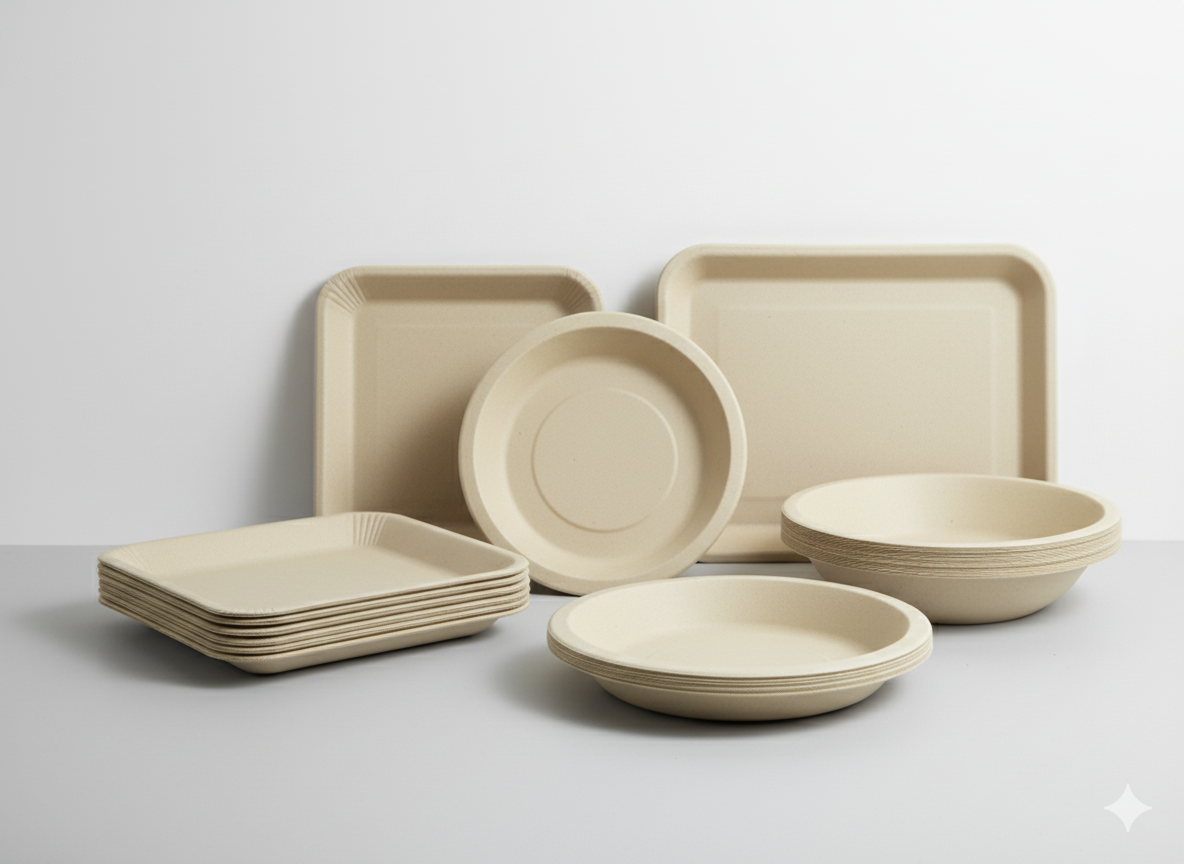
People want eco-friendly tableware, but don’t know which to choose.
This article compares palm leaf and bamboo pulp fiber plates based on materials, performance, safety, cost, and sustainability.
Keep reading to find out which material fits your needs best.
What are the differences in raw materials and manufacturing?
Eco-friendly products should start from the source.
Palm leaf plates and bamboo pulp fiber plates are made from natural materials, but their production methods are different.
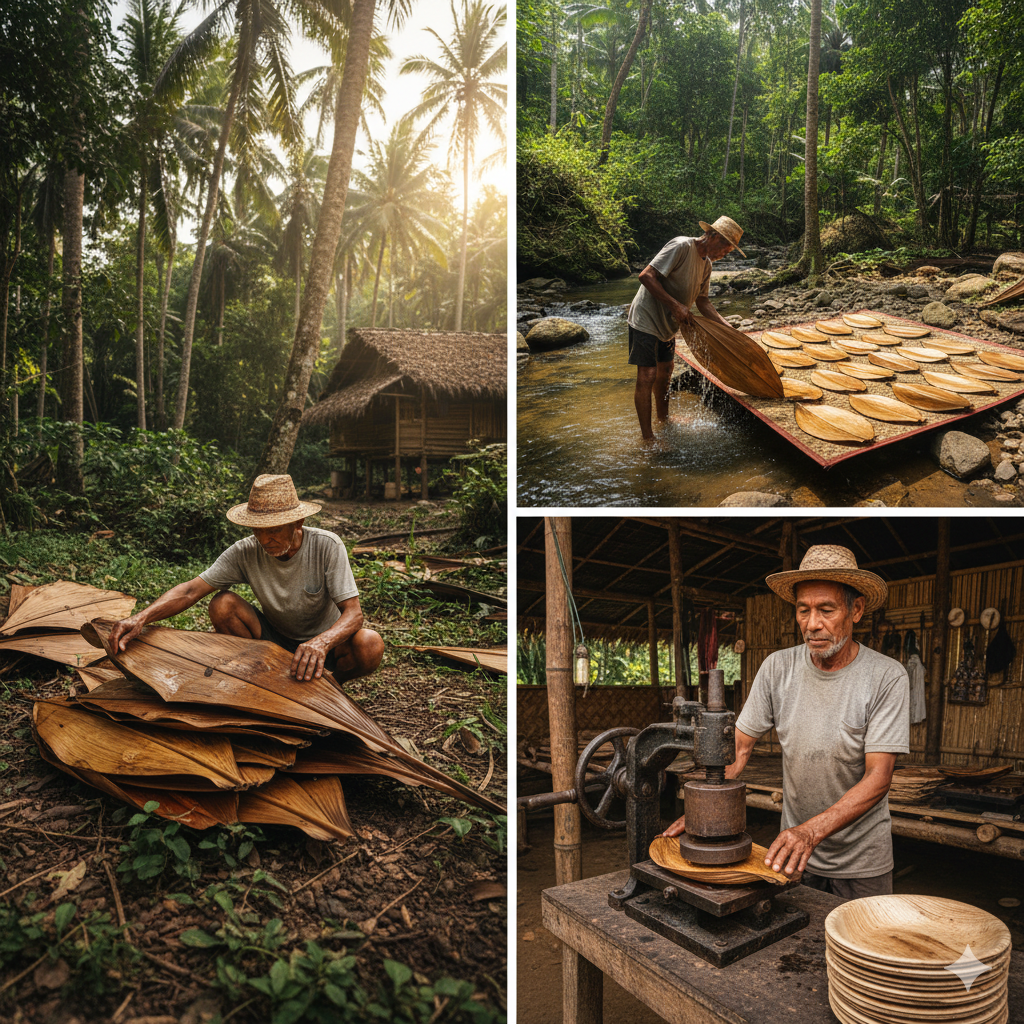
Palm Leaf Plates: Traditional and Handmade
Palm leaf plates are made from naturally fallen areca palm leaves. These leaves are hand-collected, cleaned with water, sun-dried, and then heat-pressed into different shapes. The process is simple. It uses no chemicals or synthetic binders. This means the plates are 100% natural. However, palm leaf availability is seasonal. It depends on weather and harvest cycles. When supply drops, prices go up. This makes it hard to plan long-term procurement.
Bamboo Pulp Fiber Plates: Scalable and Industrial
Bamboo pulp fiber plates are made from fast-growing bamboo. Factories process bamboo into pulp, mold it into shapes, then dry and finish the plates. This method works well for high-volume production. The output stays consistent. Unlike palm leaf, bamboo supply is stable all year round. With industrial molding, I can get plates, bowls, trays—any shape I need.
| Feature | Palm Leaf Plates | Bamboo Pulp Fiber Plates |
|---|---|---|
| Material Source | Areca palm leaves (fallen) | Renewable bamboo |
| Manufacturing | Manual, heat-pressed | Industrial, molded |
| Chemical Use | None | None |
| Supply | Seasonal | Stable |
| Shape Consistency | Less control | Highly consistent |
Which is more durable and heat-resistant?
Durability matters when plates face hot, wet, or heavy foods.
Bamboo pulp fiber plates hold up better in most real-use cases, especially for professional food service.
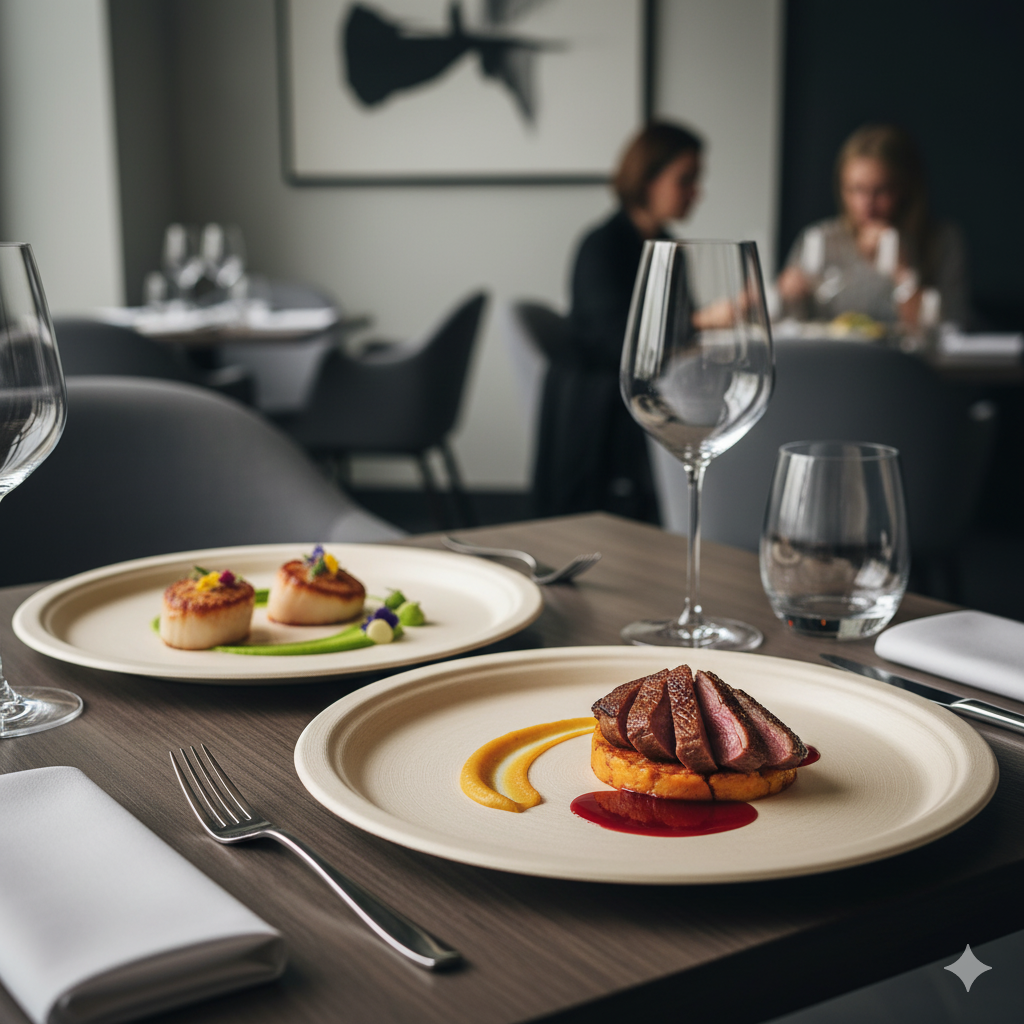
Palm Leaf Plates: Rustic but Limited
Palm leaf plates are thick and feel sturdy. Still, they absorb moisture over time. If they hold hot soup or oily foods for too long, they soften or bend. These plates work in an oven at up to 350°F (177°C) for about 45 minutes. They’re also microwave-safe for short bursts. Some users mention a natural "leaf" smell, which adds to the charm for rustic events—but not for restaurants.
Bamboo Pulp Fiber Plates: Engineered for Tough Use
Bamboo pulp fiber plates resist oil and water. They stay firm even with sauces or heavy dishes. I’ve seen them used in hotels and catering with zero issues. They handle hot water and oil up to 180°C. Freezing? No problem—down to -40°C. In ovens, they hold up at 180°C for an hour or 200°C for 40 minutes. This makes them a better option for reheating and high-volume food service.
| Feature | Palm Leaf Plates | Bamboo Pulp Fiber Plates |
|---|---|---|
| Moisture Resistance | Low | High |
| Heat Resistance | 177°C for 45 min (oven) | 200°C for 40 min (oven) |
| Microwave Safe | Yes (short time) | Yes (longer, more stable) |
| Freezer Safe | No official data | Yes (-40°C) |
| Odor | Mild natural smell | Odorless |
Which option is safer for food contact?
Safety comes first when people eat from disposable plates.
Bamboo pulp fiber plates are more tested and trusted for food safety.
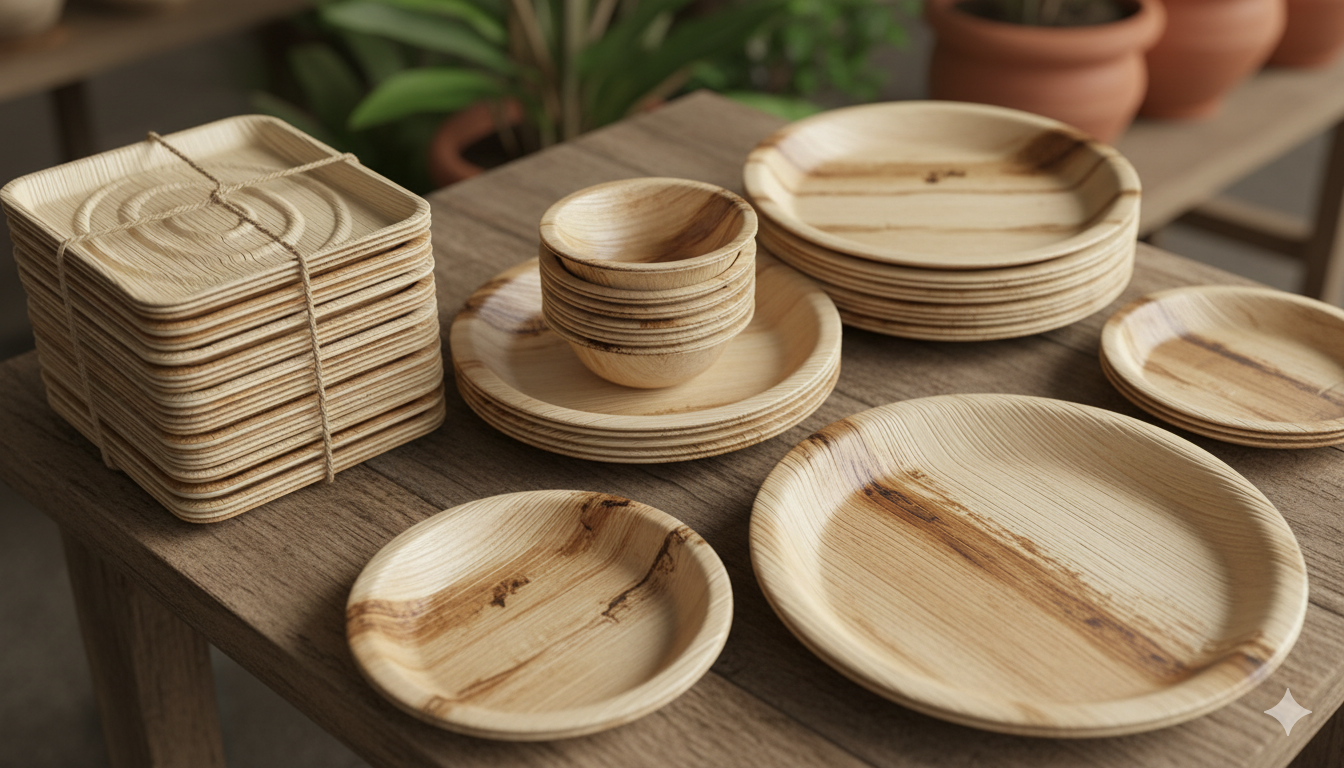
Palm Leaf Plates: Natural, But Under Scrutiny
Though palm leaf plates are chemical-free, they come from the Areca catechu palm. This type of palm has natural alkaloids. Some reports say these may be carcinogenic. While not banned, the FDA has raised alerts. This raises concerns for regular or long-term use in restaurants and schools.
Bamboo Pulp Fiber Plates: Certified and Reliable
Bamboo pulp fiber plates pass food-grade certifications like FDA and LFGB. They are safe for direct food contact. Bamboo also contains natural quinone, which helps fight bacteria and mold. This makes them a safer option for busy kitchens or long meal service. Clients in the US and EU often ask for certifications. I can confidently share our compliance reports when working with buyers.
| Safety Factor | Palm Leaf Plates | Bamboo Pulp Fiber Plates |
|---|---|---|
| FDA Certification | Alerts issued | Fully certified |
| LFGB Certification | Rare | Yes |
| Natural Chemicals | Alkaloids (concerns exist) | Quinone (anti-bacterial) |
| Suitability for Kids | Not recommended | Safe |
Which is more cost-effective and easy to buy?
Cost and availability decide if I can scale my business.
Palm leaf prices are unstable; bamboo pulp offers better long-term value.
Palm Leaf Plates: Limited Supply, Higher Cost
Palm leaf plates depend on local farmers and harvest seasons. Prices change with weather and shipping delays. Since they’re handcrafted, unit costs are higher. This might work for weddings or boutique events, but it’s risky for big orders. Also, not all suppliers offer large quantities on time.
Bamboo Pulp Fiber Plates: Industrial Supply, Stable Pricing
With bamboo pulp, production is large-scale. This keeps prices predictable. I can plan ahead for wholesale orders. In China, we’ve built integrated production lines that help cut costs.
| Factor | Palm Leaf Plates | Bamboo Pulp Fiber Plates |
|---|---|---|
| Unit Cost | Higher | Lower (at scale) |
| Supply Stability | Seasonal | Year-round |
| MOQ Flexibility | Low | High |
| Supplier Availability | Fewer | More |
Which is more eco-friendly and compostable?
Clients want plates that support sustainability goals.
Both are compostable, but bamboo pulp scales better for global distribution.
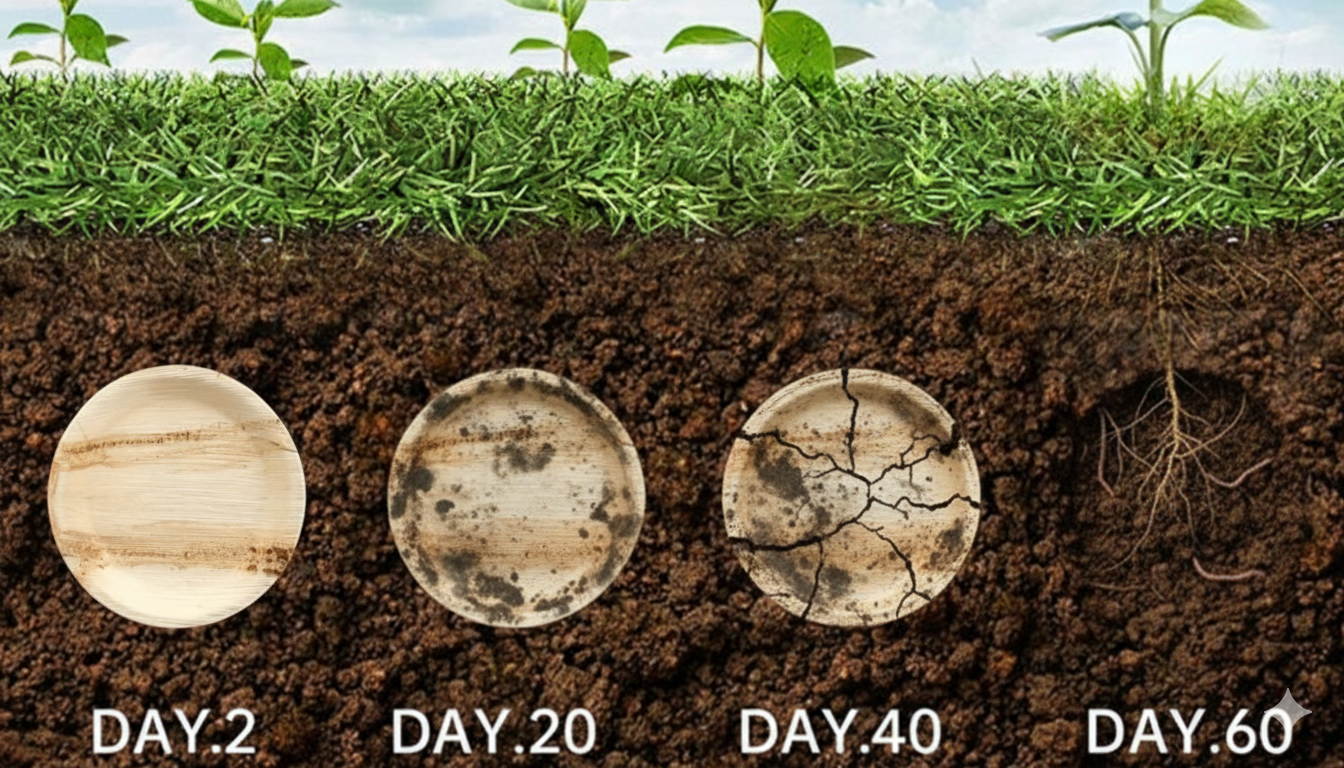
Palm Leaf Plates: Pure and Fast-Decomposing
Palm leaf plates are fully compostable. They contain no glue, bleach, or coating. After use, they break down in backyard compost piles. In 30–60 days, they’re gone. However, limited raw material and manual production make them hard to scale globally. For local events, they shine. But for export, challenges grow.
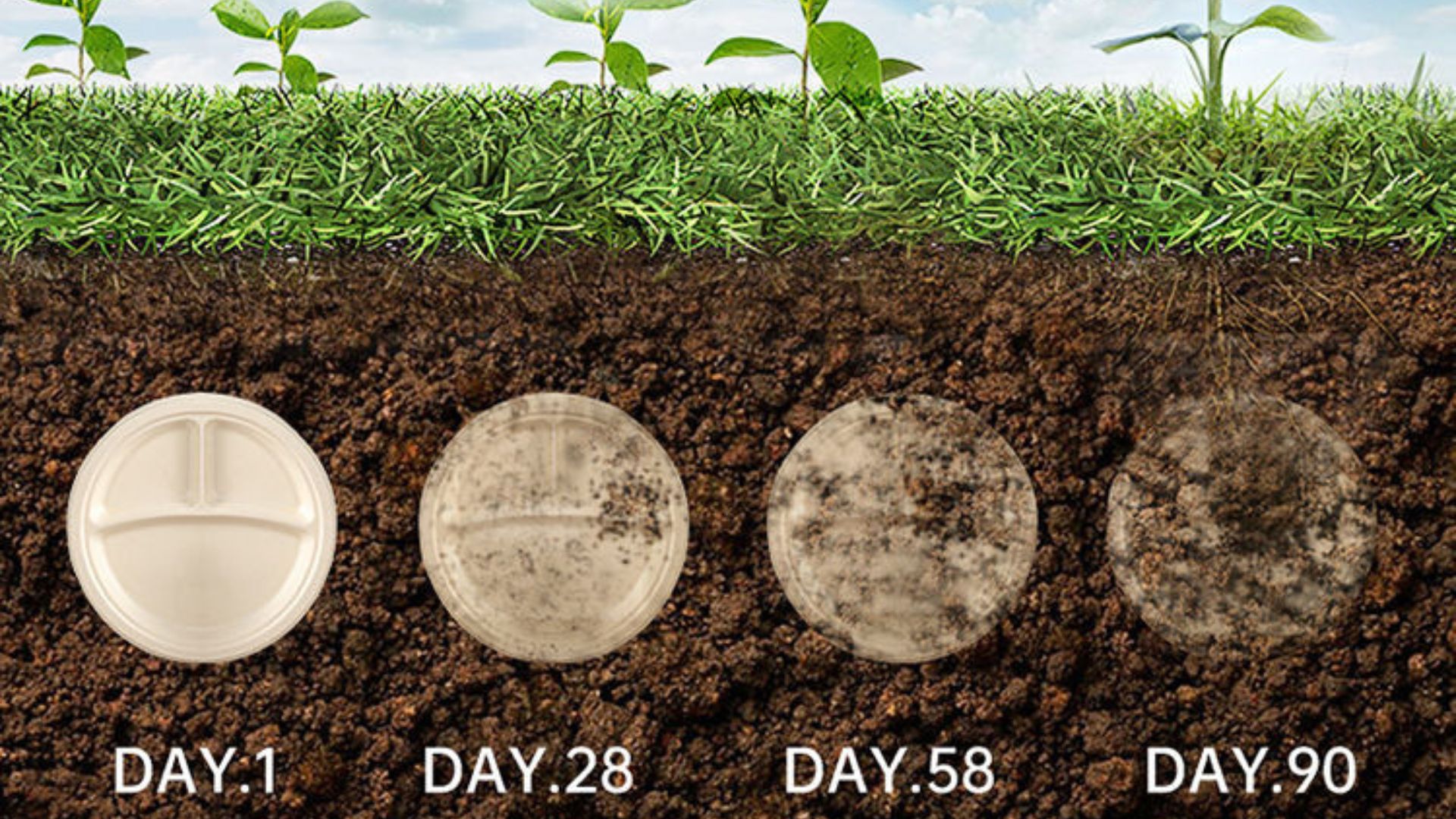
Bamboo Pulp Fiber Plates: Eco and Industrial-Ready
Bamboo pulp fiber plates are also biodegradable. They decompose in 60–90 days. They meet certifications for both backyard and commercial composting. Since bamboo grows fast, it’s renewable. Our production reduces waste, and leftover pulp gets reused. In countries with plastic bans, bamboo pulp helps clients meet legal standards.
| Compostability Factor | Palm Leaf Plates | Bamboo Pulp Fiber Plates |
|---|---|---|
| Compost Time | 30–60 days | 60–90 days |
| Home Compostable | Yes | Yes |
| Industrial Compostable | Less common | Yes |
| Supply Chain Sustainability | Medium | High |
Which one fits real-world use better?
A product must perform well in daily business.
Palm leaf wins on style; bamboo pulp wins on function.
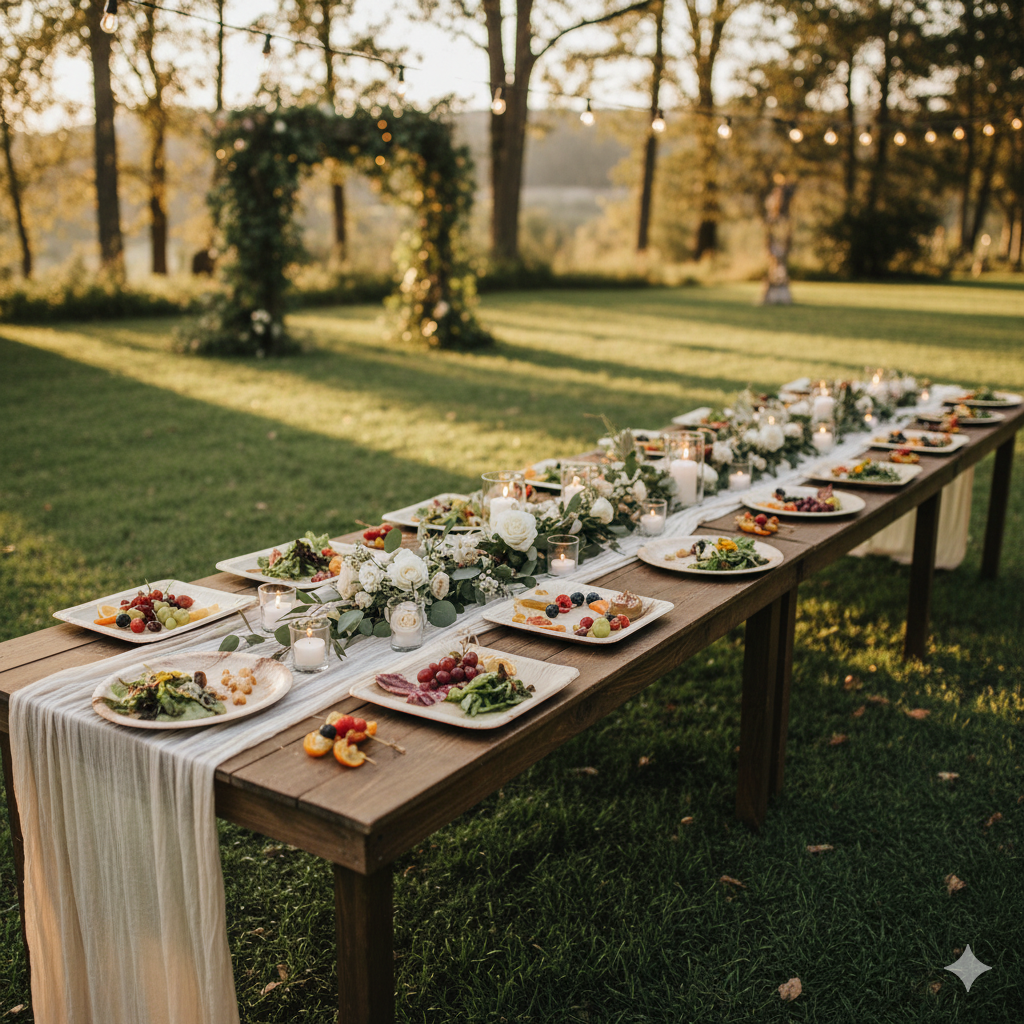
Palm Leaf Plates: Style-Driven, Event-Ready
Event planners love palm leaf plates. They look handmade and earthy. For weddings, rustic parties, or nature-themed events, they work well. The texture and color vary, which adds to the charm. But I’ve heard feedback about warping with oily dishes. They also need careful storage to avoid moisture damage.
Bamboo Pulp Fiber Plates: Practical, Versatile, Scalable
Restaurants, hotels, and catering companies choose bamboo pulp fiber plates. They’re stackable, durable, and always the same size. This matters for portion control and plating. They handle hot, wet, and heavy foods without breaking. In retail, they look clean and premium. Feedback from customers says these plates feel safer and more modern.
| Use Case | Palm Leaf Plates | Bamboo Pulp Fiber Fiber Plates |
|---|---|---|
| Event Decor | Excellent | Neutral |
| Heavy Food | Can warp | Handles well |
| Storage | Needs dry conditions | More forgiving |
| Branding/Labeling | Difficult | Easier to customize |
Conclusion
Palm leaf suits style-focused events, but bamboo pulp fiber offers better safety, durability, and scalability for daily and commercial use.
FAQ
1. Are bamboo pulp fiber plates microwave and oven safe?
Yes, bamboo pulp fiber plates are safe in both the microwave and oven. They can withstand temperatures up to 180°C for 1 hour and 200°C for 40 minutes.
2. Do palm leaf plates get soggy with wet foods?
Yes, palm leaf plates can absorb moisture and become soggy if exposed to wet or oily foods for too long.
3. Which is more eco-friendly: palm leaf or bamboo pulp fiber plates?
Both are eco-friendly, but bamboo pulp fiber plates are more scalable for global use. Bamboo is renewable, while palm leaves are seasonal.
4. Can both be composted in a backyard compost bin?
Yes, both types of plates are compostable. Palm leaf plates decompose in 30–60 days, while bamboo pulp fiber plates take 60–90 days.
5. Which option is better for restaurants and catering businesses?
Bamboo pulp fiber plates are better for high-volume use in restaurants and catering. They are more durable, consistent, and available year-round.

Ann
Hi, I’m Ann, and with over 5 years of experience in the foodservice industry, I’ve had the pleasure of working with restaurants and catering businesses to develop eco-friendly, tailored solutions that help you thrive in today’s green economy. I’m passionate about sustainability and committed to providing high-quality products that align with your values.
If you’re looking to make the switch to eco-friendly, sustainable tableware, I’m here to help! Reach out today, and let’s explore how we can support your business’s goals while contributing to a healthier planet.

